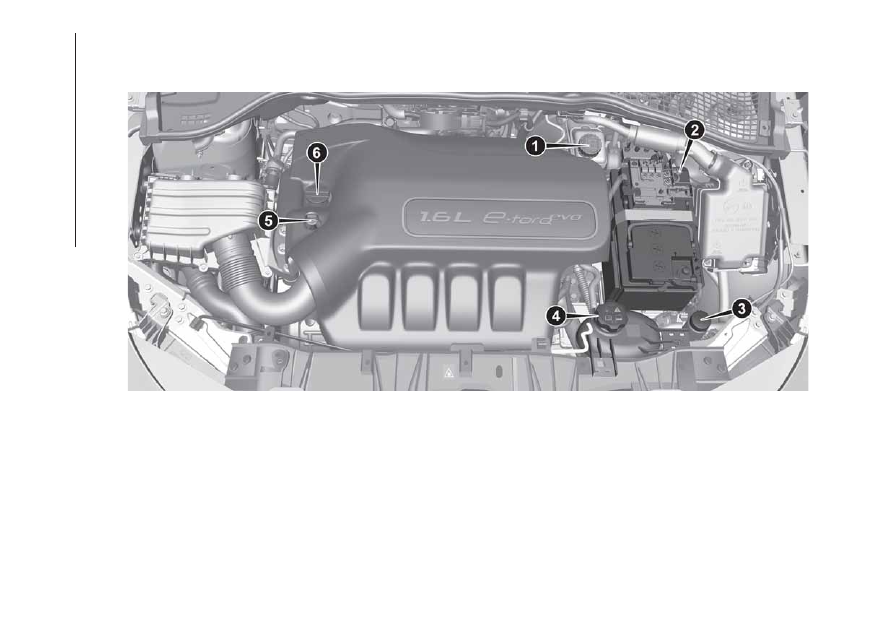Fiat Tipo 4Door (2018 year). Instruction - part 11

1.6 E.Torq E6 version
(where provided)
1. Brake fluid 2. Battery 3. Windscreen washer fluid 4. Engine coolant fluid 5. Engine oil dipstick 6. Engine oil cap/filler
165
09026J0004EM
168
SER
VICING
AND
CARE